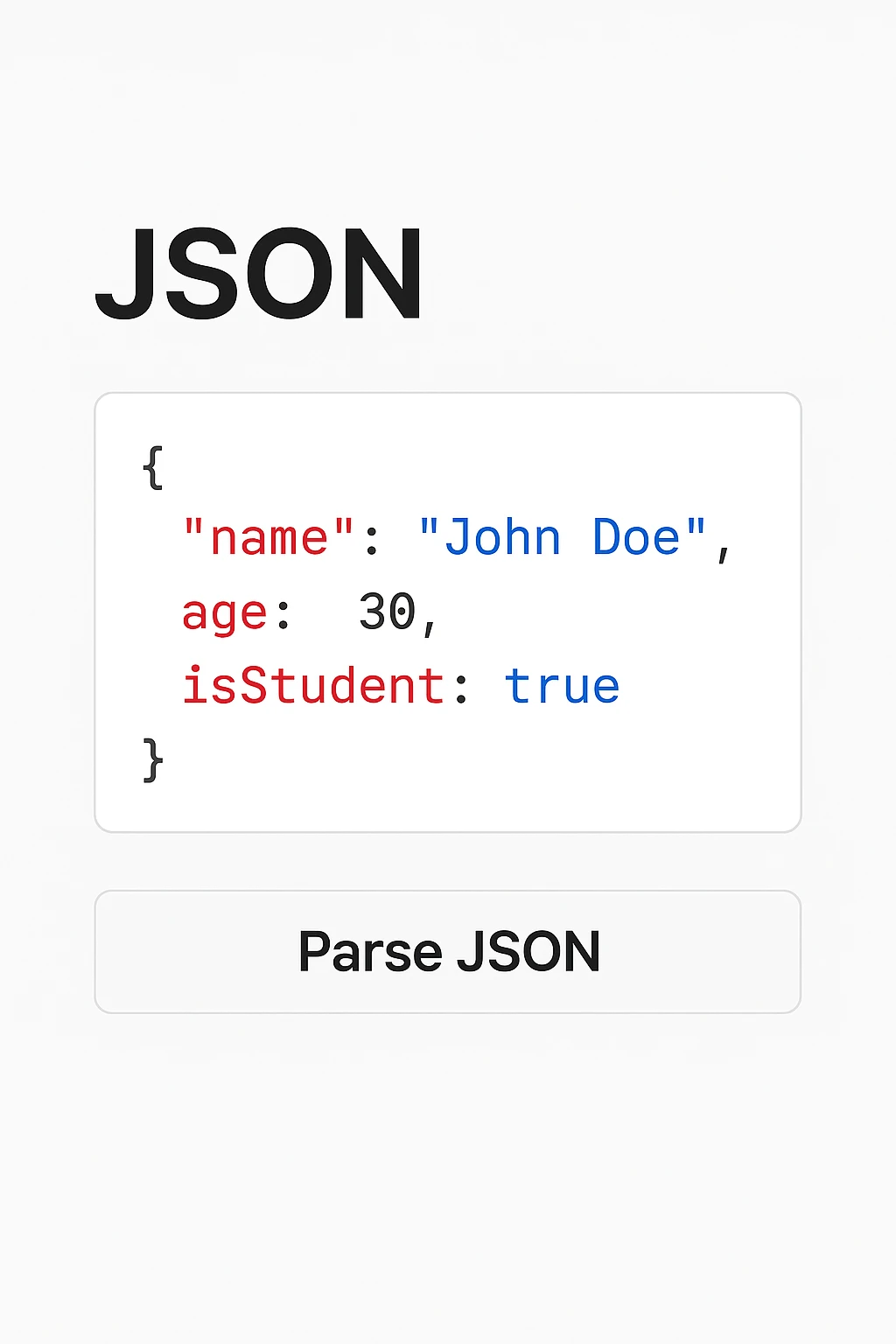Understanding complex JSON structures can be challenging, especially when dealing with deeply nested objects from APIs or databases. JSON parsers with tree views transform raw data into an interactive, visual format that's easy to navigate and understand.
In this comprehensive guide, we'll explore how to effectively parse and explore JSON data, understand its structure, and use our free online JSON parser to make sense of even the most complex data hierarchies.

Explore JSON data with an interactive tree view, data type indicators, and instant copy functionality.
What is JSON Parsing?
JSON parsing is the process of converting a JSON string into a structured data format that can be explored and manipulated. A visual JSON parser goes beyond basic parsing by providing:
- Tree View: Visual representation of JSON hierarchy with expandable/collapsible nodes
- Data Type Indicators: Clear labels showing whether values are strings, numbers, booleans, objects, or arrays
- Path Navigation: Easy identification of data location within nested structures
- Interactive Exploration: Click to expand/collapse, hover to reveal actions
Why Use a Visual JSON Parser?
1. Understanding Complex API Responses
Modern APIs often return deeply nested JSON with hundreds of fields. A tree view helps you quickly understand the structure and find the data you need.
Example: Exploring a GitHub API response with repositories, users, commits, and nested metadata.
2. Debugging JSON Data
Identify data type mismatches, null values, and unexpected structures that might cause bugs in your application.
Example: Discovering that an expected number is actually a string, causing calculation errors.
3. Learning JSON Structure
Understand how different data types nest within each other and learn JSON patterns used by various APIs and services.
Example: Learning how pagination metadata is typically structured in REST APIs.
4. Quick Data Extraction
Copy any value or entire subtree with a single click, perfect for testing or documentation.
Example: Extracting a specific configuration object to use in your tests.
Understanding JSON Data Types
Text values enclosed in double quotes
"hello", "2025-10-07"Integer or floating-point numbers
42, 3.14, -17True or false values
true, falseCollection of key-value pairs
{ "name": "John", "age": 30 }Ordered list of values
[1, 2, 3], ["a", "b", "c"]Represents absence of value
nullHow to Use Our JSON Parser
Paste Your JSON
Enter your JSON data from APIs, config files, or any source into the editor.
Click Parse
Press the parse button to generate an interactive tree view of your data.
Explore the Structure
Click arrows (▶/▼) to expand/collapse nodes and navigate through nested data.
Copy Values
Hover over any value and click the copy button to copy it to your clipboard.
Parser Features
Interactive Tree
Expandable/collapsible nodes for easy navigation
Type Indicators
Clear labels for strings, numbers, booleans, etc.
Quick Copy
Copy any value or subtree instantly
Statistics
View depth, size, and key/item counts
Frequently Asked Questions
Can I parse very large JSON files?
Yes, the parser handles JSON of any size. For very large files, you may want to explore specific sections rather than expanding everything at once.
What happens if my JSON is invalid?
The parser validates your JSON first and shows detailed error messages with line highlighting if there are syntax errors.
Can I copy parts of the JSON?
Absolutely! Hover over any value, object, or array and click the copy button to copy it to your clipboard.
Is my data secure?
Yes, all parsing happens locally in your browser. Your JSON data never leaves your computer.
